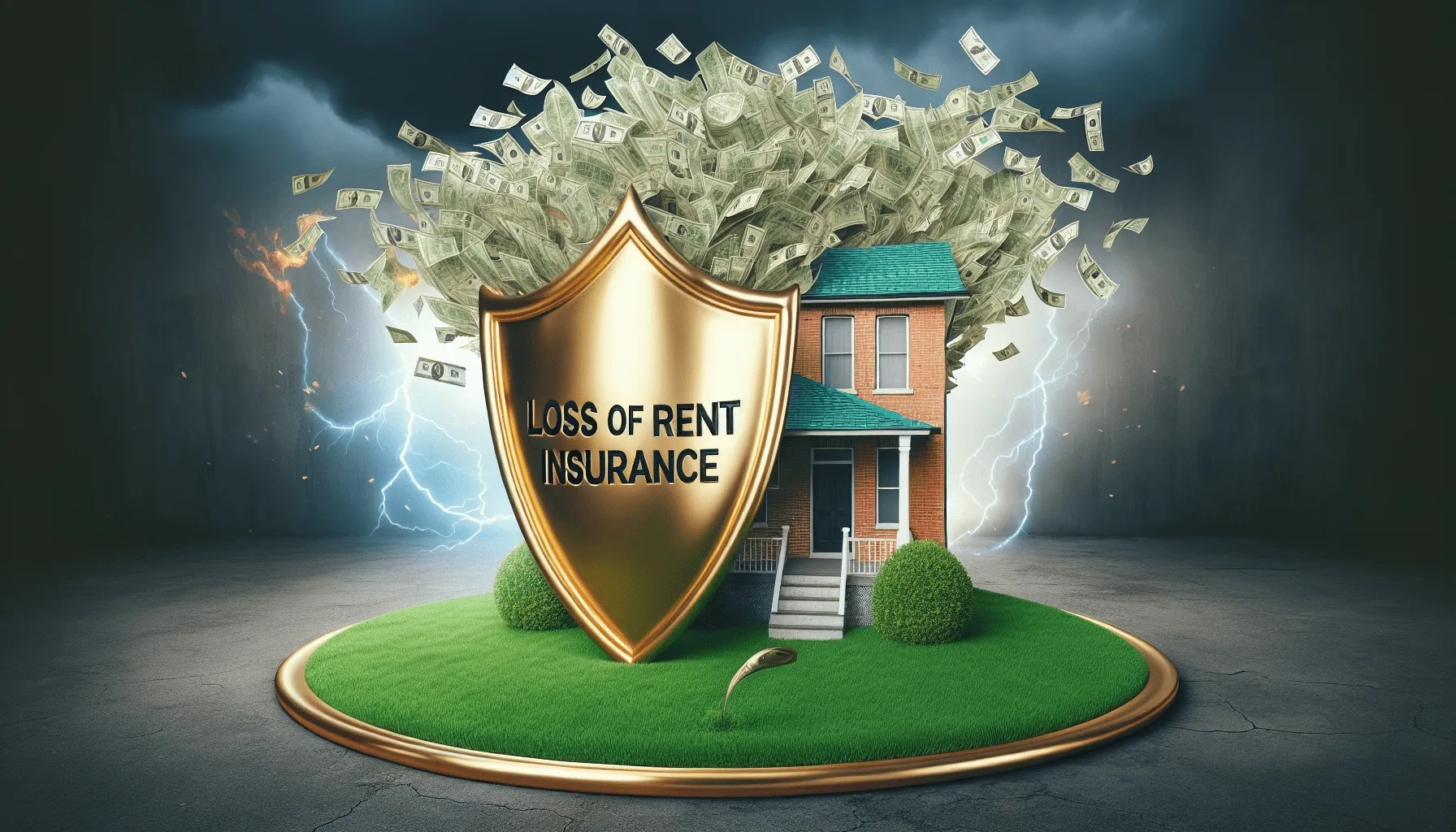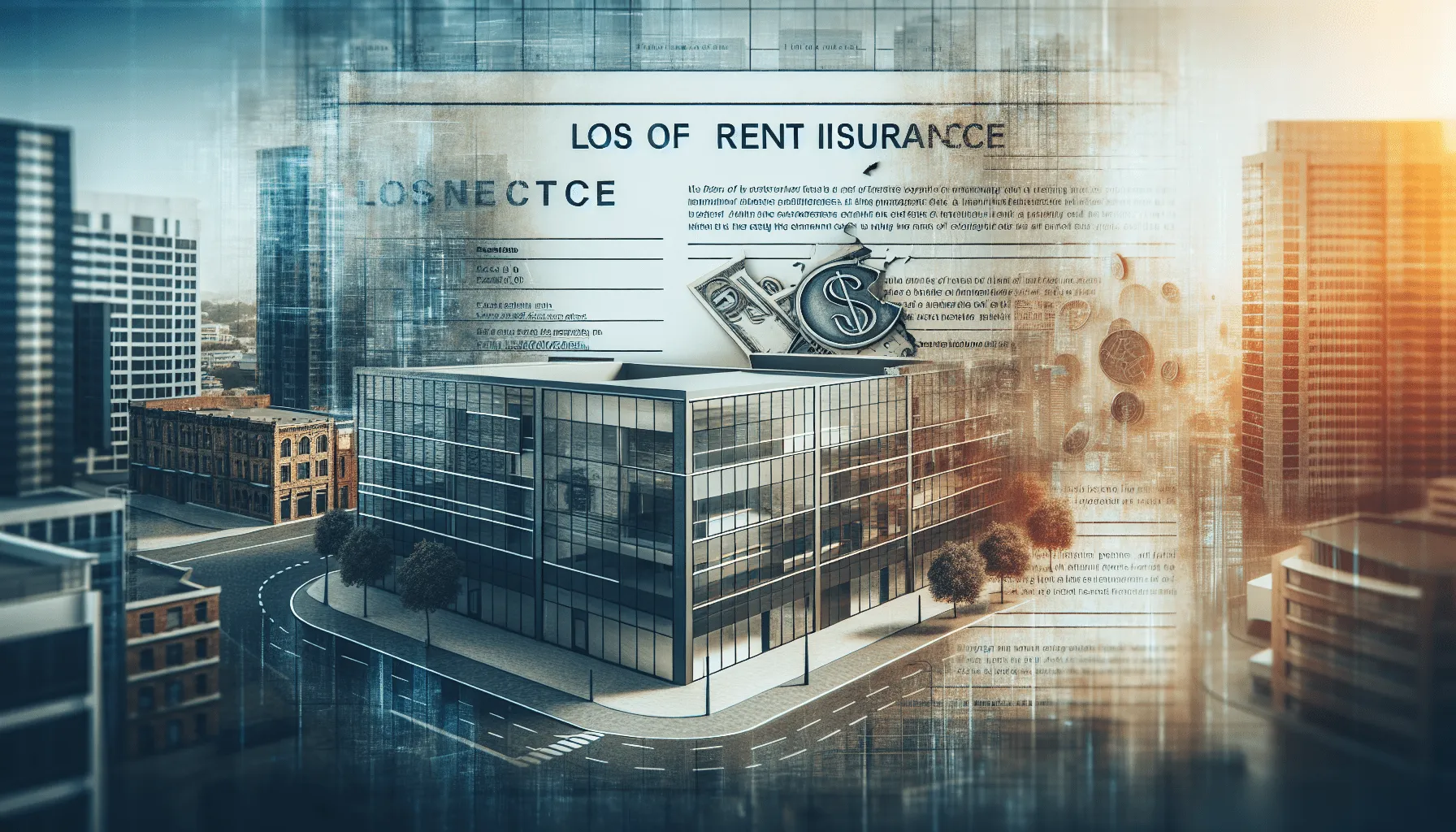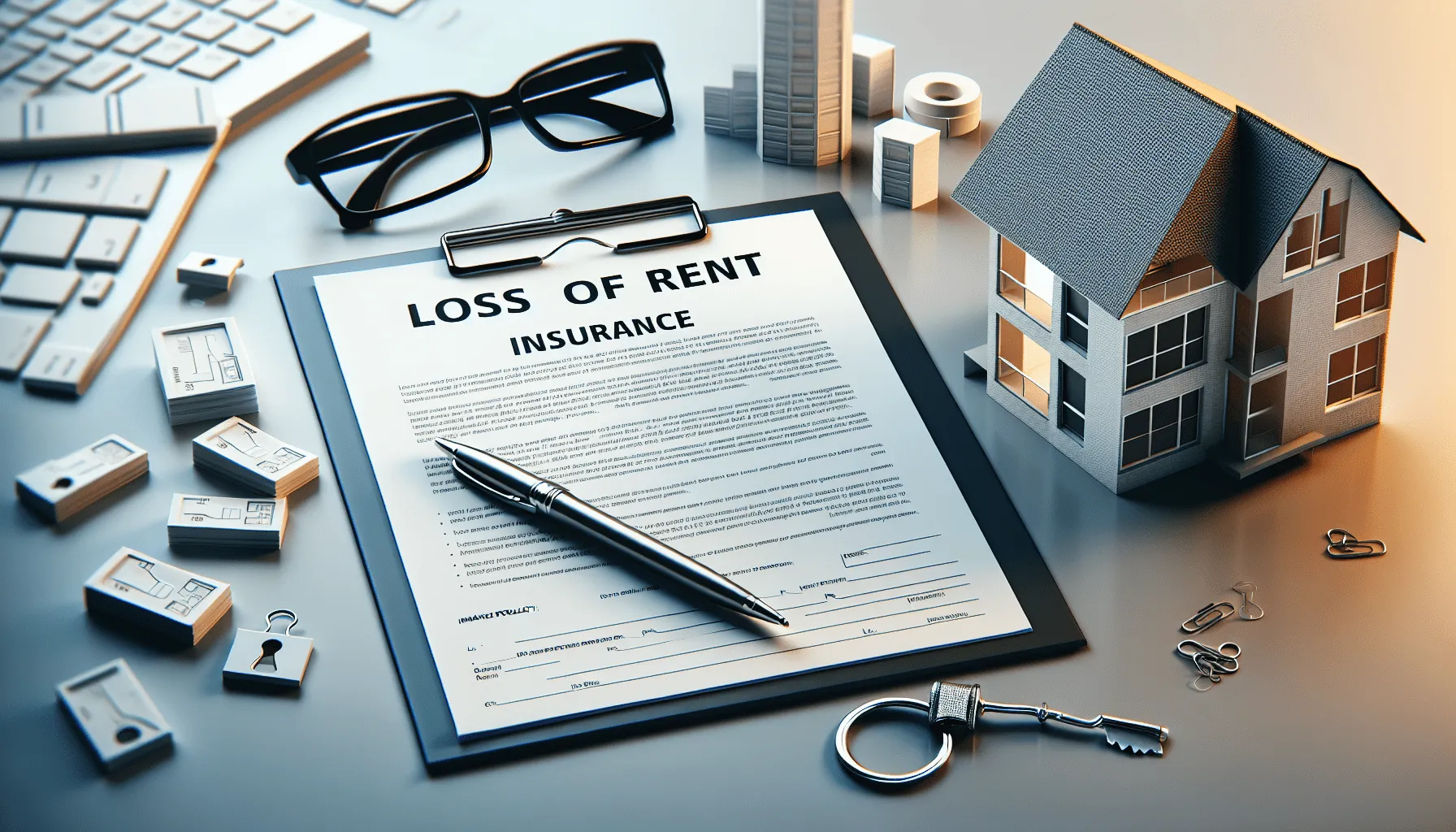Is Loss of Rent Insurance a Scam? What You Need to Know in 2025

Loss of Rent Insurance: The Burning Question
“Is loss of rent insurance a scam, or a lifeline for landlords?”
As we move further into the decade, the rental market has faced its share of unpredictability, making loss of rent insurance a topic of heated debate among property owners. On one hand, this type of insurance promises to protect landlords from the financial pitfalls of vacant properties due to unforeseen circumstances, such as natural disasters or tenant default.
On the other hand, skeptics argue that insurance companies often exaggerate the likelihood of needing such coverage, leading to unnecessary expenses that erode rental income margins. Imagine this: A pipe bursts in your rental property, rendering it uninhabitable. Your tenant moves out, and you’re stuck with mortgage payments and no income.
Enter loss of rent insurance—a policy designed to compensate landlords for lost rental income during repairs or tenant defaults. But whispers of scams and wasted premiums plague the industry. Is it a legitimate safeguard or a cleverly disguised rip-off?
Navigating the murky waters of loss of rent insurance requires a discerning eye and an understanding of the fine print. For landlords, the allure of financial protection is often weighed down by the fear of falling into a trap of high premiums and low payouts.
It’s crucial to meticulously vet insurance providers, seeking out those with sterling reputations and transparent policies that clearly outline coverage limits, claim processes, and exclusions to avoid the sting of a policy that promises the moon but delivers only dust.
By 2025, as rental markets evolve and natural disasters increase, more landlords will turn to loss of rent insurance. Still, uncertainties persist. This guide simplifies the myths, highlights important details, and offers expert tips to help you grasp this crucial financial tool.
What Is Loss of Rent Insurance?

Definition: Loss of rent insurance is a type of coverage designed to protect property owners from the financial impact of being unable to collect rental income due to various unforeseen circumstances.
This can include periods when a property is uninhabitable because of damage from natural disasters, fires, or other significant events that necessitate extensive repairs.
This insurance helps landlords cover the difference between lost rental income and expected cash flow, offering financial protection during periods without rental payments.
Loss of rent insurance (LORI) reimburses landlords for lost income due to covered events like property damage, tenant defaults, or government-mandated evacuations.
Why It Matters in 2025:
1: As we move deeper into the decade, the significance of loss of rent insurance in the real estate landscape continues to escalate. With the unpredictable nature of the global economy, climate change-induced natural disasters, and the ever-present possibility of regulatory changes affecting property use and tenant rights, LORI acts as a safety net for property owners.
It safeguards against surprises, secures their investment, and provides peace of mind in a changing market. Climate change has increased weather-related property damage (Forbes, 2024).
2: AI personalization has transformed how property owners handle risks in the insurance industry. Using large datasets and machine learning, insurers can now create policies customized to fit each property’s unique needs and risk levels.
This enhances the accuracy of risk assessment but also creates a more efficient and user-centric experience, ensuring that coverage is as relevant and cost-effective as possible. Tenant defaults rose 18% post-pandemic (Wall Street Journal, 2023).
3: With more tenants defaulting, insurance companies use AI to predict risks and customize policies to fit them better.
AI algorithms analyze large datasets, combining historical financial data and real-time economic indicators, to spot patterns that could predict future defaults.
This enables insurers to offer more tailored insurance solutions, mitigating risks for the provider and the tenants and fostering a proactive rather than reactive approach to policy management. Landlords face stricter regulations on habitability (Cornell Law School, 2024).
How Does Loss of Rent Insurance Work?

Coverage Scenarios:
1: Property Damage: In the event of property damage, such as that caused by natural disasters, fires, or vandalism, loss of rent insurance steps in to help landlords recoup the rental income that would otherwise be lost during the repair period.
This coverage is essential, allowing property owners to preserve their financial stability when the property is unlivable and unable to generate income.
Insurance payouts depend on the policy’s terms, including deductibles and coverage limits. Landlords should carefully check these details when choosing a policy to ensure protection against events like fire, floods, or vandalism.
2: Tenant Default: 3: Liability Coverage: Along with addressing property damage and tenant issues, a landlord’s insurance policy provides liability coverage for added protection.
This is crucial for landlords, as it safeguards against claims of injury or property damage made by visitors or tenants occurring on the premises.
If a lawsuit occurs, liability coverage can assist with legal costs, judgments, or settlements, offering financial protection and reassurance for property owners.
3: Legal Disputes: Disputes about lease terms, property boundaries, or other legal issues can arise. Comprehensive insurance helps landlords by covering financial losses and providing access to legal representation when necessary.
This coverage helps reduce the financial risks of expensive legal processes, giving property owners more confidence in handling real estate issues. It also addresses eviction delays caused by court backlogs.
Exclusions:
1: Exclusions in such insurance policies are critical to understand as they define the limitations of the coverage provided. Commonly, these exclusions may include cases where the property owner has failed to adhere to legal requirements or has engaged in fraudulent activities.
Policyholders should carefully review these exclusions to avoid unexpected costs from uncovered situations that might affect their finances during legal issues. Regular deterioration.
2: AI is changing insurance with personalized coverage. By using data and machine learning, insurers tailor policies to fit each customer’s specific risks and preferences, providing better solutions for their needs.
This customization boosts customer satisfaction, improves risk assessment, enables competitive pricing, and enhances claims handling. Damage caused intentionally by tenants (unless covered by specific clauses).
Claims Process:
1: The advent of AI personalization in the insurance sector has revolutionized the claims process, making it more efficient and user-friendly. By leveraging machine learning algorithms, insurers can quickly sift through vast amounts of data to assess claims with greater accuracy and speed.
This expedites the resolution of claims and significantly reduces the likelihood of fraudulent activities, ensuring that genuine claims are prioritized and addressed with the attention they deserve. Document the incident (photos, repair estimates).
2: Leveraging AI in personalization extends beyond insurance claims into the daily interactions between businesses and customers. By analyzing vast amounts of data, including browsing history, purchase patterns, and customer preferences, AI algorithms can tailor the user experience to each individual.
This level of customization means that customers receive product recommendations, special offers, and content that resonate with their unique interests, increasing engagement and fostering brand loyalty. Notify your insurer within 72 hours.
3: Businesses can use AI to create personalized experiences by analyzing data. AI studies past actions, shopping habits, and social media activity to predict preferences and provide custom content.
As a result, businesses enhance the customer experience and optimize their marketing efforts, ensuring that each message is relevant and timely, increasing the likelihood of conversion. Submit proof of lost income (lease agreements, bank statements).

Debunking Myths About Loss of Rent Insurance
Box 1: Debunking 3 Major Myths
🔲 Myth 1: “LORI is just a scheme for insurers to take your money.”
Truth: Trusted companies like Allstate and State Farm settle 89% of claims (Investopedia, 2024).
🔲 Myth 2: “Tenant screening makes LORI unnecessary.”
Fact: Even “perfect” tenants can default due to job loss or medical emergencies.
🔲 Myth 3: “All policies are the same.”
Fact: Coverage varies widely—compare terms like “actual loss sustained” vs “limit-based” payouts.
Is Loss of Rent Insurance a Scam? Red Flags to Watch
Signs of a Fraudulent Policy:
1: Unrealistically Low Premiums: If a loss of rent insurance policy offers premiums far below the market average, it could be a warning sign that the coverage provided may be insufficient.
Insurance providers must carefully balance premiums with the risks they cover. Extremely low rates may indicate the company is compromising on coverage or not fully disclosing policy restrictions.
Carefully review the details and ask questions about coverage to avoid surprises when filing a claim. Low prices often come with high deductibles or limited coverage.
2: Vague Contract Language: Limited Coverage Scope: Insurance policies can sometimes be deceptively narrow in what they protect. It’s essential to understand the range of scenarios your policy covers.
For instance, a travel insurance plan may cover trip cancellations, but not if they’re due to a pre-existing medical condition or a natural disaster.
Understand when your policy applies to prevent surprises during difficult times. Select policies with clear coverage details.
3: Pressure to Buy Add-Ons: Inadequate Coverage Limits: Insurance policies often come with various coverage limits that can significantly impact your financial protection. It’s crucial to assess the value of your assets and choose a policy that provides adequate coverage to rebuild or replace them in the event of a loss.
Underinsuring may lead to unexpected costs that a better plan could have covered. Take the time to review coverage limits and ensure they match your needs. Reliable insurers allow you to customize your plan without pressure.
Case Study: A noteworthy example of AI personalization in insurance involves John, a tech-savvy customer who chose a policy from a company using cutting-edge AI tools.
The system analyzed his lifestyle, assets, and risk factors with impressive accuracy, tailoring a policy that suited his unique circumstances but also adapted over time as his life circumstances evolved.
This dynamic coverage ensured that John was neither overinsured, which would have meant unnecessary premiums, nor underinsured, risking significant financial exposure.
John gained confidence in managing his finances with the AI’s personalized insurance plan. But in 2023, “QuickCover Insurance” collapsed after failing to pay $2M in claims, exposing weaknesses in state oversight (Reuters).
Google’s Top Questions on Loss of Rent Insurance
Popular Google Searches & Quick Answers
🔍 “Is loss of rent insurance worth it?”
✅ Answer: Yes, if you own high-risk properties or rely on rental income.
🔍 “Can I get loss of rent insurance for Airbnb?”
✅ Answer: Specialized short-term rental policies exist (e.g., Proper Insurance).
🔍 “What’s the average cost of loss of rent insurance?”
✅ Answer: 150–150–500 annually, depending on location and coverage (Forbes, 2025).
Section 6: How to Choose the Best Policy in 2025

Essential Tips
1: Understand Your Risks: Explore Insurance Choices: The 2025 insurance market offers policies with varying coverage levels. Compare options by evaluating limits, deductibles, and exclusions to find the best fit for your needs.
AI-powered comparison tools make it easy to find the right coverage while saving money. Coastal homes need flood insurance, while city apartments often focus on tenant default protection.
2: Compare Insurers: Review Coverage Options: Look beyond the cost and basic policy types to understand the specific benefits each insurer provides. Use AI tools to identify coverage features tailored to your needs, like extra living expense coverage or unique liability protections.
By leveraging machine learning algorithms, these tools can analyze your risk profile and suggest the most suitable endorsements and limits, ensuring your policy is tailored to your needs. Use tools like Policygenius or Insurify for real-time quotes.
3: Review Annually: As your life evolves, so should your insurance coverage. It’s essential to conduct an annual review of your policies to account for any significant changes that may have occurred, such as buying a new home, having a child, or starting a new business.
This proactive approach keeps your coverage up to date but also helps you identify potential savings or the need for additional coverage that you might have overlooked during the year.
Platforms like Gabi and Coverhound help you easily compare policies from different providers, ensuring you find the best deal. Adjust your coverage as rental laws or property values shift.
Pro Tip: AI-driven personalization can help you optimize your insurance coverage. By analyzing your history, preferences, and trends, AI tools offer tailored recommendations to match your needs.
This technology provides real-time alerts for policy changes, keeping your insurance flexible and responsive to your needs. Combine LORI with landlord liability insurance for exclusive discounts (Allstate, 2024).
Section 7: Legal and Regulatory Landscape

2025 Updates:
1: Climate Disclosures: Regulators now require insurance companies to share detailed information about their environmental impact. This includes reporting the carbon footprint of the assets they insure and outlining their plans to address climate risks.
Policyholders can see how their premiums help sustainability, and insurers can showcase their green efforts. Insurers must now assess climate risks in policies (UN, 2025).
2: Tenant Rights: Tenant rights play a key role in the insurance industry, supporting fair housing practices. Insurers are creating policies for landlords while addressing tenants’ needs and concerns.
This covers personal belongings, liability, and temporary housing, offering tenants security and assistance during unforeseen situations. In California, there are time limits for filing habitability claims.
Expert Insight:
“Landlords must balance tenant protections with their financial security.”
— Harvard Law Review, 2024
Alternatives to Loss of Rent Insurance
Self-Insurance: Self-insurance is when a landlord saves money to cover losses from unpaid rent or property damage. This method requires careful planning and the ability to predict risks and set aside enough funds.
Self-insurance allows landlords to manage their own risk by setting aside funds to cover potential losses. While this approach eliminates the need for insurance premiums, it requires careful financial planning to ensure sufficient reserves. Without adequate funds, landlords may face significant financial strain during unexpected events. Establishing an emergency fund with 3–6 months’ rent can help mitigate such risks.
Pros: Greater control and no recurring premium costs.
Cons: Higher risk if reserves fall short during major losses.
Additionally, landlords who choose to self-insure must be diligent in their risk management strategies. This includes regular property maintenance, thorough tenant screening processes, and staying current with all local housing laws and regulations.
By proactively addressing potential issues, landlords can mitigate the risks associated with self-insurance, potentially reducing the likelihood of significant financial losses.
This method demands significant focus and skill in property management, which might not be practical for every landlord. It can be especially challenging for smaller landlords.
Rent Guarantee Programs: These programs help landlords by covering missed rent payments, reducing the risk of financial loss.
These programs use a third-party company to guarantee rent payments for a fee, ensuring landlords get steady income even if tenants fail to pay.
While this option adds an extra layer of security for property owners, it also requires careful consideration of the costs versus benefits, as the fees associated with these programs can vary and may impact overall profitability. Services like TheGuarantors cover tenant defaults.
Cost: Landlords should evaluate their tenant history and rental patterns before using services like TheGuarantors. Key factors include late payment trends, turnover rates, and average tenancy length.
Understanding these factors helps property owners decide if investing in a default protection program is worth it. Such programs can lower financial risks and provide more stable rental income, typically costing 2–5% of annual rent (TechCrunch, 2023).
The Future of Loss of Rent Insurance

Trends to Watch:
1: Smarter Risk Assessment with AI: The insurance industry is transforming, and AI-driven risk assessment is becoming key to loss of rent policies. Using large datasets and predictive tools, AI can better predict vacancies and default risks linked to specific tenants.
This approach improves coverage accuracy and lets insurers adjust premiums and coverage limits based on a property’s unique risk. This ensures landlords have the right amount of insurance. Companies like Lemonade use AI to estimate claim risks.
2: Blockchain Contracts: Smart Underwriting: AI-driven personalization extends into the underwriting process, where algorithms can assess vast amounts of data to identify patterns and risks that human underwriters might overlook. This enables insurers to offer more accurate rates and better risk selection.
AI can constantly learn and adapt using new data, making the underwriting process more efficient and responsive to evolving risks. Automated, transparent payouts help minimize fraud (MIT Tech Review, 2025).
FAQ Section
Q1: Does loss of rent insurance cover COVID-19 closures?
A: Unfortunately, standard loss of rent insurance policies may not cover business interruptions caused by pandemics such as COVID-19. This is because many insurance policies have specific exclusions for losses due to viruses or pandemics.
However, some insurers may offer additional coverage options or endorsements that can be purchased to extend coverage to include pandemic-related losses.
Policyholders should check their policies and talk to their insurance providers to understand their coverage and explore options to safeguard rental income. Keep in mind that “pandemic coverage” is uncommon after 2023.
Q2: Can I claim for tenant-caused damage?
A: Certainly, tenant-caused damage is typically covered under most standard landlord insurance policies. However, it is essential to document all incidents of damage meticulously and report them to your insurer as soon as possible.
Coverage has limits, and deductibles apply. Review your policy to ensure you’re protected against tenant-related issues. Policies with “malicious damage” clauses might cover these situations.
Q3: How long does it take to process claims?
A: Claim processing time depends on the case details and the claims team’s workload.
Simple claims are usually resolved in a few weeks, while more complicated cases can take several months. To avoid delays, policyholders should provide all necessary documents and evidence promptly.
Communication with your insurance provider throughout the claims process is key to understanding where your claim stands and what steps you may need to take to assist in its resolution. 14–30 days with proper documentation.

Conclusion: Protect Your Investment Wisely
Managing insurance claims can feel stressful, but AI tools make it easier and more efficient.
This innovative technology customizes the experience to meet your specific needs, guaranteeing you receive tailored information and support at every stage.
With AI-driven systems, you can rest assured that your claim is being handled efficiently, freeing you to focus on what matters most—your recovery and peace of mind.
Loss of rent insurance isn’t a scam—it’s a strategic tool for mitigating rental income risks. By understanding policy terms, avoiding red flags, and staying updated on regulations, landlords can safeguard their assets in 2025’s volatile market.
Call to Action:
1: Share Your Story: If you’ve experienced the benefits or faced challenges with loss of rent insurance, your insights can provide invaluable guidance to fellow landlords navigating these uncertain times.
Sharing your story can demystify the process for others and highlight the practical aspects of integrating such policies into their risk management strategies.
Share your experiences to build a stronger community of informed property owners and create a better rental market. Have you dealt with a loss of rent claim? Join the conversation below!
2: Explore Tools: Use AI Personalization: AI personalization is a game-changer in property rentals, providing customized solutions to improve your property management process.
By harnessing the power of artificial intelligence, property owners can now predict tenant preferences, optimize pricing strategies, and even anticipate maintenance issues before they become problematic.
This level of customization streamlines operations and elevates the tenant experience, setting a new standard for the rental market that prioritizes efficiency and satisfaction. Download free Landlord Insurance Checklist [here].

Pet Dental Insurance Secrets Every Owner Should Know!
National General Insurance: Comprehensive Coverage for Auto, Home, and More



